Liu Rongqian: What is the same for Chinese and Western art creation?|
Author:China News Weekly Time:2022.08.22

Chinese and Western arts in common
But the form is not the same
China News Agency reporter: Yu Ruidong
Number of full text: 2090
Estimated reading time: 7 minutes

From Shanghai, Guiyang, Hong Kong, Taipei, Paris to Montreal, from painting and calligraphy, from the design of painting and calligraphy, the design of the yin and yang Taiji, and the corporate image to photography. As a famous door, Liu Rongqian, who has changed through the changes, walked between East and West for half of his life, immersed in artistic creation, and became an academician of the Royal Academy of Art in Canada with innovative photography art concepts. Recently, Liu Rongqian accepted an exclusive interview with China News Agency in Montreal, shared the experience of art and sea, and talked about the differences between Chinese and Western arts.
Abstracts are currently recorded as follows:
Reporter of China News Agency: Regardless of the art of painting, music, drama, etc., there are completely different ways and appreciation methods between Chinese and Western techniques and styles between Chinese and Western. What do you think is the same between Chinese and Western art?
Liu Rongqian: I started to learn painting from my teacher at the age of 12. Now I am 84 years old, and basically all my time is devoted to art. The longer it, the more arts do not say what art is. But Chinese and Western art really have something to do. Everyone loves beauty, and the brain pulls the eyes to find. At the same time, people also have a basic sense of insecurity. The beauty of beauty gives people a sense of security and makes people feel comfortable. Due to the differences in environmental and regional differences, everyone's aesthetics will be different.
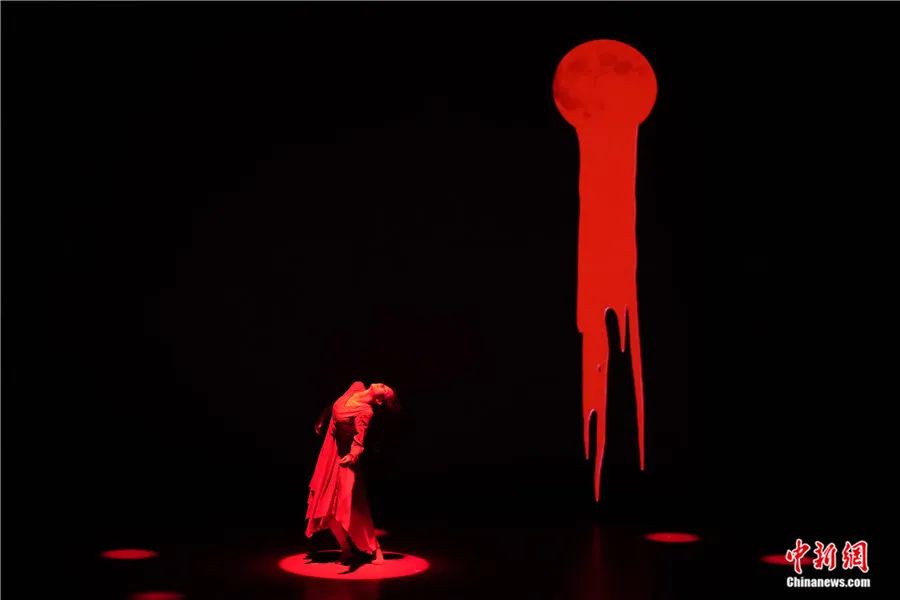
Dance drama "Tsing Yi". Photo by Shi Chunyang from China News Agency
Any art is a language. When engaged in artistic creation, "World Language", but the "world language" with "rural sound" will be moving. Chinese and Western arts are common, but the forms are not the same.
Reporter of China News Agency: What is the difference between the field of cultural thinking in Chinese and Western art creation?
Liu Rongqian: China has a long history and culture, focusing on inheritance. Except for several areas in the West, the accumulation time is relatively short. The artists are not affected by so many (historical inheritance), but they are more likely to have more room for play.
Westerners' thinking patterns are like "semi -circular". For example, you ask Westerners, how old is your world? He will answer a semi -circular answer in front of him, which is infinite. But he often lacks the concept of "behind." The Chinese have the concept of "round". There are things that our parents, ancestors, and ancestors taught me behind. So the Chinese pay attention to balance. But this may also affect the progress of the artist, and the creative thinking is not enough.
Many people will proudly say that they are a "disciple of the room." But from another perspective, "entering the room" also means that you are frame.
People engaged in artistic creation have strong observation and absorption power. Seeing more people's things, it will naturally be affected. The same is true of boxing. I now use a camera as a brush to create. In addition to painting, I have also learned the skills in various art fields such as sculpture, printmaking, ceramics, etc., but the only thing I did not learn is photography. I did not (inherited) "burdens", not "frame", so I could better create.
For the artist, whether it is writing or sculpture, painting, and photography, if you are sincere to create, in the end, it is a "self -portrait". People will say that this is the work of someone. Because of his paintings, it was like himself in the end.
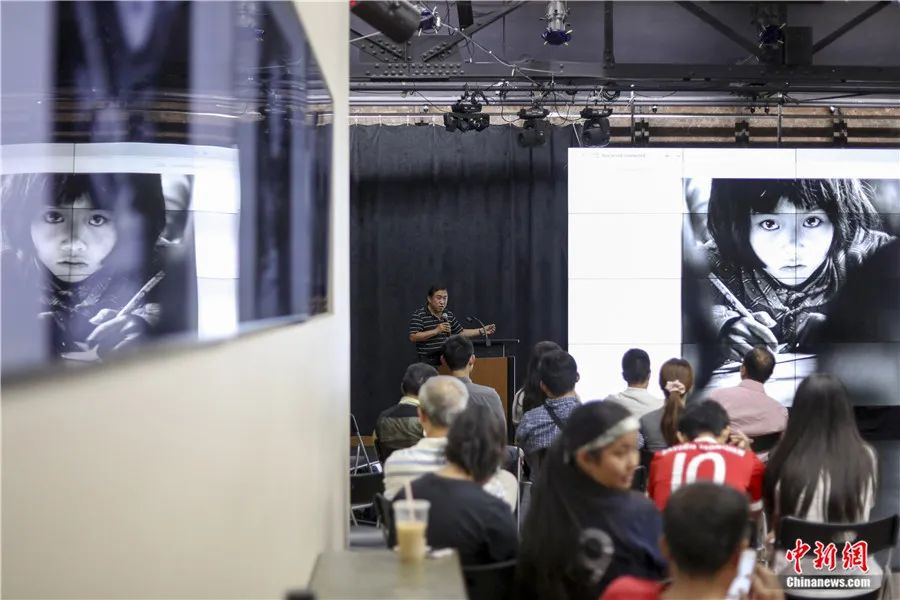
In June 2018, the Chinese documentary photographer Xie Hailong told photographers at the New York Asian Cultural Center about the "Hope Project" iconic photo "Big Eye and Little Girl". China News Agency reporter Liao Pan Photo
Reporter of China News Agency: For you, how can you be integrated with each other?
Liu Rongqian: To play Taijiquan, you must be stable, you need to destroy the existing balance, and then continue to find the balance, so that you can move. The same is true for calligraphy. There must be a central point, then expand, and balance the relationship between black and white.
The same is true of photography. I want to turn the subject of shooting into an interested object. It depends on the things and backgrounds around it, look at the color blocks, and handle the reality in the picture. The biggest similarities are that they are like birds, and they must have two "wings" to fly, that is, to balance technology and sensuality.
Practicing Tai Chi only remember the "style", and it was Tai Chi. Some Taijiquan specifications have requirements for high hands and eyes. But Tai Chi is a family boxing instead of singing. If you practice calligraphy, you can only remember the brushwork and learn the "eight methods of the eight characters", then it is too technical and lack of sensuality. If you want to take good photography, you must forget the camera and turn the camera into yourself.
The current camera and mobile phone make photography easier, but it is difficult to shoot moving things. Tai Chi, calligraphy, photography, etc., must have their own rhythm in their hearts. The artist should learn to feel the rhythm and listen to the silence. The same is true for writing articles. There must be a rhythm, otherwise it will be flat and bland.
Reporter of China News Agency: When you were a teacher in Montreal, he taught "Tai Chi Methodology" for local Canadian students. How can this course help them understand themselves and the world?
Liu Rongqian: I mainly use Tai Chi and standing piles to explain how to find my own center points. Looking for the center point, you need to know who you are. With the center point, we can manage others and things.
"Foreign coach" from the United States Jack practiced Tai Chi with his disciples in Wudang Mountain Golden Ding, Shiyan City, Hubei Province. China News Agency reporter Zhang Chang
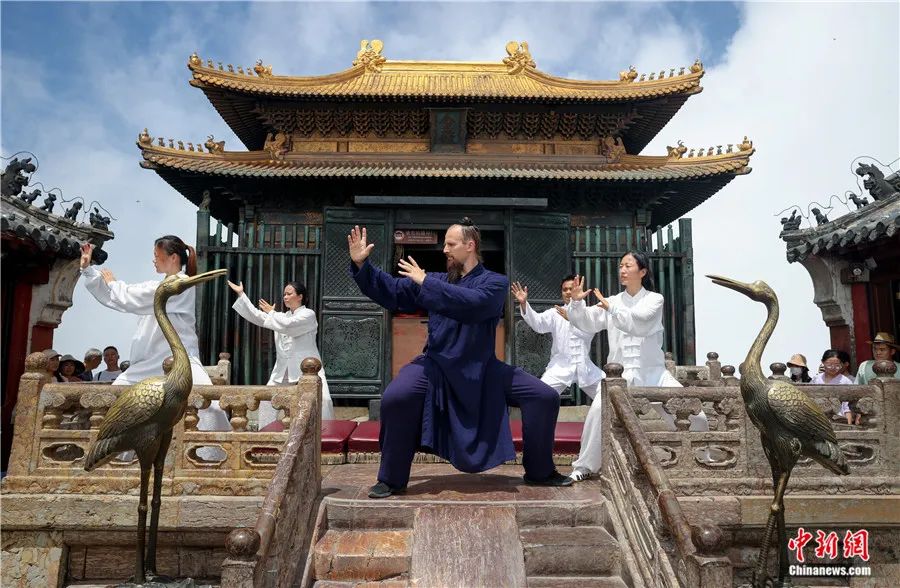
Tai Chi standing piles must "hold the ball". When "holding the ball", the circle is in front of the body and the center of the circle is outside the body. It is easy for people to feel unstable and uncomfortable. You need to tell him that you are not holding the circle in front of your chest, but to move the center point into your body with your mind. Think about this, people are right. Therefore, it is stable after grasping your center point with this method, and then work. I have a student who is engaged in psychological analysis. Listening to me explained that Tai Chi said it was too useful.
China News Agency reporter: What is your main concept of your photography? What is the relationship between surgery and Taoism during the creation of "creativeism"?
Liu Rongqian: First of all, use a camera as a brush. In fact, 90%or more photos are taken on the camera automatic. When creating, take a similar mood with a mobile phone, which is taken with "meaning" -to take the meaning of the meaning, but it is not casual. "Simplified shape, concentration."
In May 2022, Liu Rongqian showed reporters' new works of "creativeism" to reporters at home. Photo by Yu Ruidong, a reporter from China News Agency

Another point is not to be perfected, let the viewers complete together. Draw a lotus leaf and lotus, and some people will say that if there is a frog on it. This is because he has a frog in his heart. He has to create with me, and I give him a space. Tai Chi, calligraphy, photography, painting, etc., or the relationship between people are actually the art and space games of space.
Taoism also needs to be balanced. "Tao" is too much for "surgery". If you want to show a thing, you have to have technical; but if you take pictures completely and technically, the picture is "dead", so there must be emotional things.
Now NFT (intangible homogeneous tokens) art (digital artwork). The emotional connection between people in the virtual world is also different from real life. This also affects me and makes me feel that my thinking is wider and wider.
Back to the similarities and differences between Chinese and Western art, art creation should speak "world language". Talking about "Tuhua", but many foreign words are mixed in the middle, it is not the real "world language".
Introduction to the interviewee:

Photo by Yu Ruidong, a reporter from China News Agency
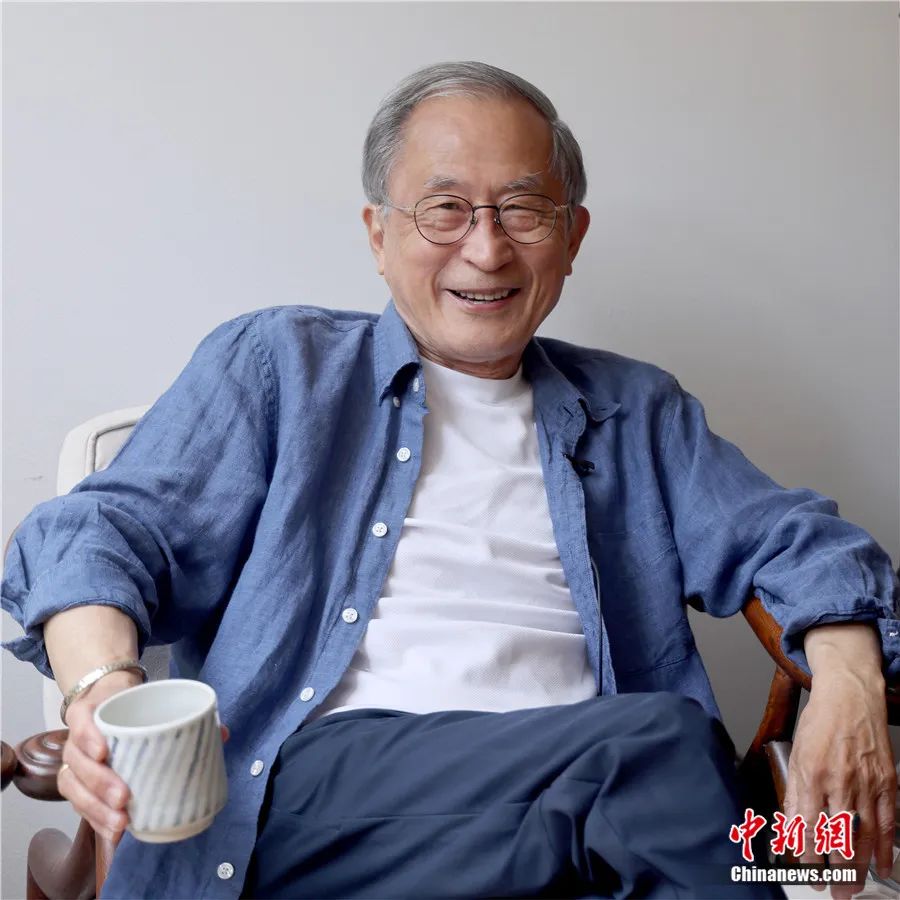
Liu Rongqian, a member of the Royal Academy of Art in Canada, photography artist, calligraphy and painter, and created photography "that is creative". Born in Shanghai in 1938, his grandson outside the Republic of China, a celebrity of the Republic of China, graduated from the Fine Arts Department of Taiwan Normal University. He later studied in Paris, France. In 1967, he moved to Canada. He founded a corporate image design company and later engaged in lectures, art creation and research. Now living in Montreal.
Text Editor: Xu Xueying
Image editor: Zhang Xinglong
- END -
Feng Lianwei original 丨 Who does not say that my hometown is good (prose)
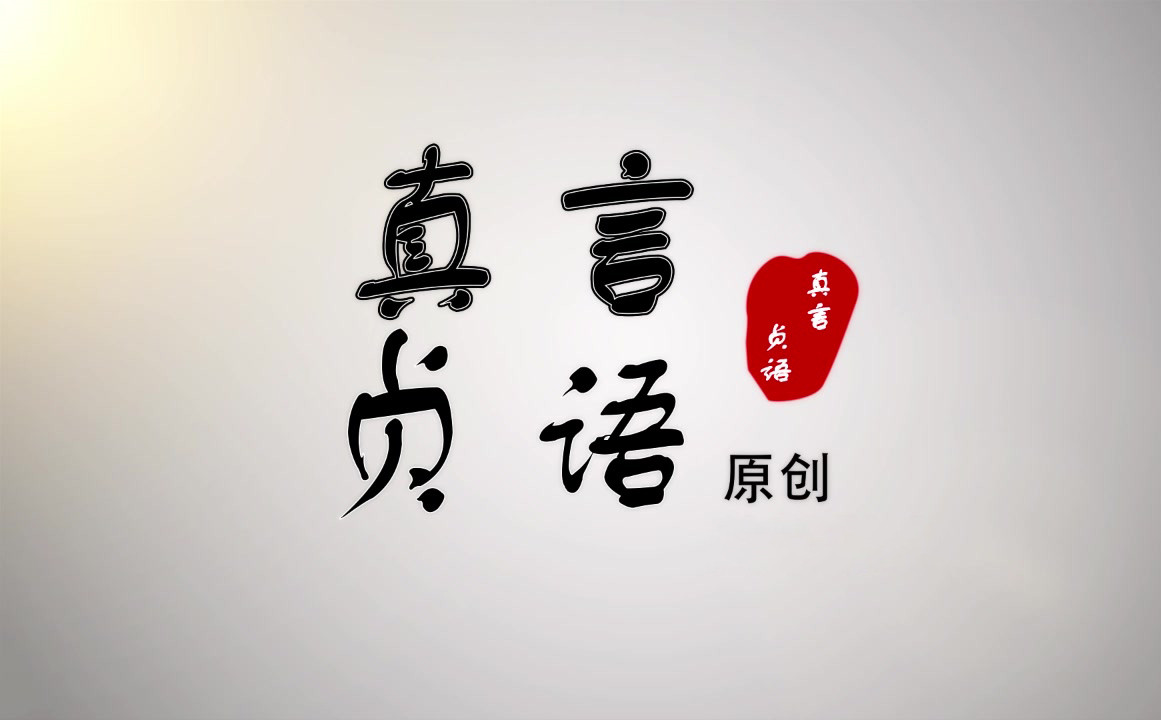
Who doesn't say that my hometown is goodText/Feng LianweiThe Battle of Meng Liangz...
King of Summer!Do you know about some cold knowledge about watermelon?
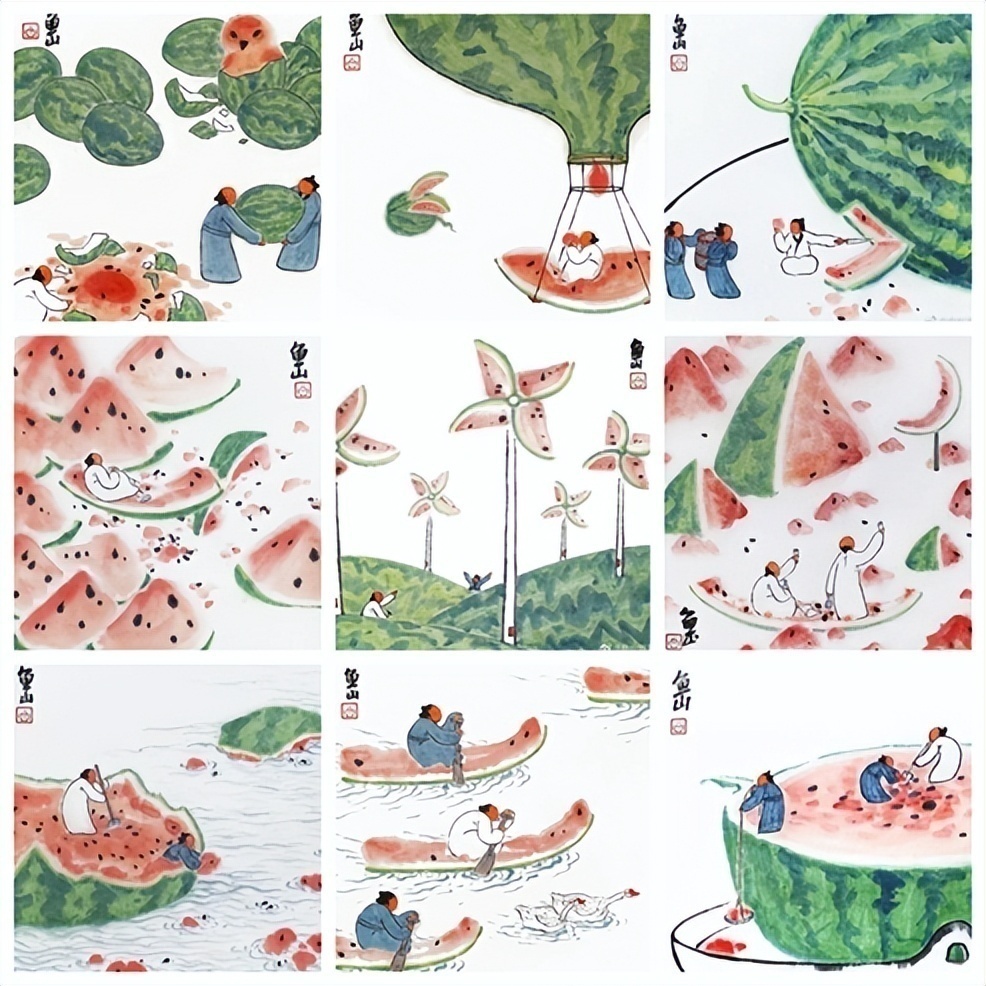
The old trees are faint, there are fish and shrimp dinner, and the air -conditione...